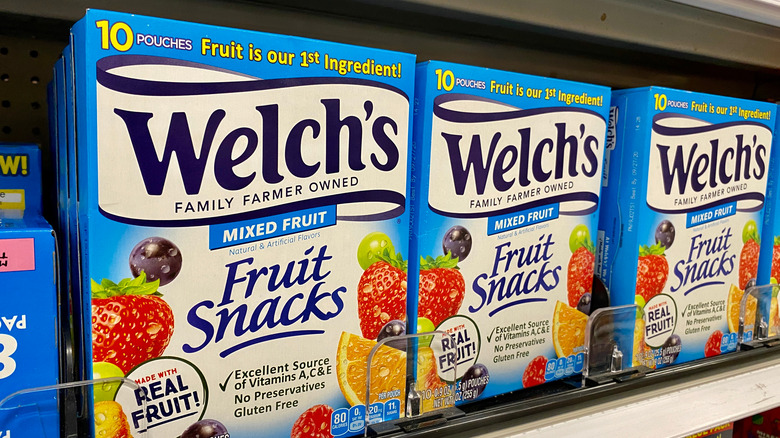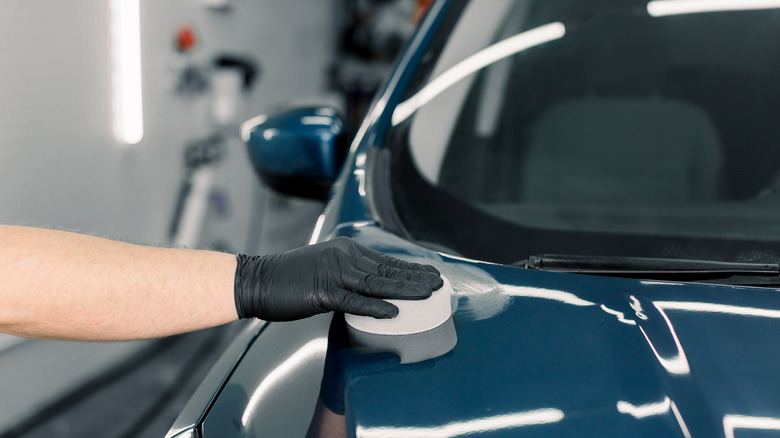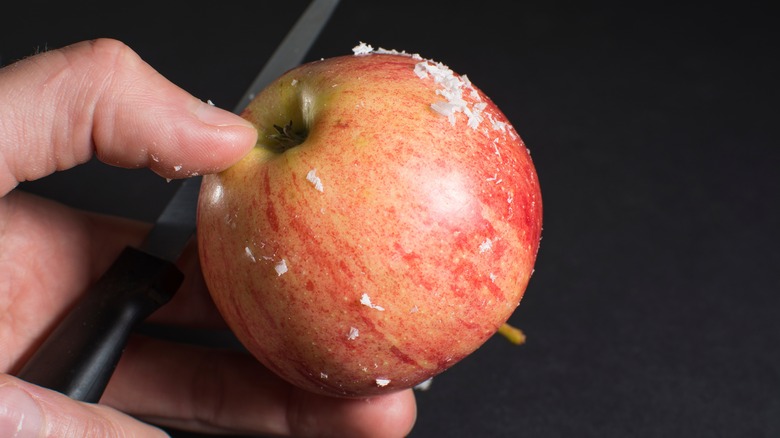What Fruit Snacks And Cars Have In Common Has Us Slightly Uncomfortable
Fruit snacks and cars: at first glance, they don't have much in common. And why would they? Fruit snacks are squishy little pieces of snacky delight; cars are huge, movable pieces of metal and glass.
Scarily enough, though, fruit snacks and cars actually do share one commonality. (We hate to break it to you, but it's not that fruit snacks can be shaped like cars or that kids often eat fruit snacks when their parents are behind the wheel.) It all comes down to a fruit snack ingredient that you'll also find in a product that makes your car sparkle. This unexpected ingredient in fruit snacks may sound much more harmful once you know exactly what it has to do with your car, but what does it do to make fruit snacks into what they are? And while fruit snacks are FDA-approved, how safe is this ingredient? You might be flummoxed right about now (and we are too), but there's a secret lurking in your child's fruit snacks, and it's time to unearth it.
What fruit snacks and cars have in common
If the fruit snacks you buy always seem to have a glossy sheen on them, it's not an accident. Fruit snacks and cars are both made shinier with an unexpected item: a multipurpose wax called Carnauba wax.
Yes, Carnauba wax is prominently featured in a variety of car waxes. It's more than a little hard to believe that the stuff you use to make your car shine at the car wash is the same thing that's giving your kids' fruit snacks their taste and texture. It also can prevent melting in food, which is why it's so important in fruit snacks — it keeps them as durable as possible while still retaining their signature texture. The good news is that there are different grades of Carnauba wax, including some that are specifically approved for use on food. While this may feel of little comfort to you, the Carnauba wax in your foods is safe to eat, and it's actually in more types of food than you think.
Other uses for Carnauba wax
It turns out that cars and fruit snacks aren't the only strange items with unexpected commonalities. Carnauba wax is used for a variety of purposes other than waxing cars and is also found in plenty of other foods.
The wax is a key ingredient in shoe polish, in makeup products, on surfboards, and on doors. (If this comes as a surprise, just think of how glossy professional surfers' boards look.) It's also used in an important non-food item that we put in our mouths: dental floss. Fruit snacks also are far from the only food containing Carnauba wax. This wax is also found in the candy coating of M&Ms (without which they would melt much more easily), in cheese to improve its appearance and texture, and on fruit. (That wax on your fruit? It's Carnauba wax, and it's safe to eat.) Carnauba wax makes an appearance in plenty of non-vegan items, but it's a vegan wax. The next time you try to snag some of your child's fruit snacks, remember that even though Carnauba wax is used in many non-food products too, it's completely safe to eat.


